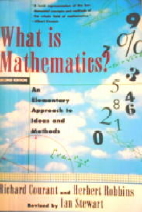A nice article, focused on the origins of creativity, appears in the March 13 issue of Scientific American. Author, Heather Pringle, surveys research that seems to indicate that the human talent for innovation actually emerged over hundreds of thousands of years ago, before homo sapiens left Africa. This is contrary to the view held previously that a genetic mutation ignited sudden cognitive advances in homo sapiens already living on the European continent some 40,000 years ago.
Pringle describes the archeological evidence that motivates this revision in the story of our evolution. She also fills the story in with new insights into the evolution of the modern human brain. While mathematics is never mentioned specifically, questions about the emergence of symbol in our experience are inevitably relevant to questions about the source of mathematical creativity.
I followed up on one of Pringle’s examples, finds at an archeological site on the very tip of Africa.
The hunter-gatherers who inhabited Blombos Cave between 100,000 and 72,000 years ago, for example, engraved patterns on chunks of ocher; fashioned bone awls, perhaps for tailoring hide clothing; adorned themselves with strands of shimmering shell beads; and created an artists’ studio where they ground red ocher and stored it in the earliest known containers, made from abalone shells.
I have given most of my attention to the engraved patterns on ochre. Professor Christopher Henshilwood led the early investigation at this site. His work continues more recently through the TRACSYMBOLS Project. A wealth of information related to the project is easily accessed on their website. Their home page has two videos and, in one of them, Ian Tattersall, Curator of the Museum of Natural History, introduces the work with a description of symbolic thought that certainly calls mathematics to mind (at least it does to my mind).
“The one thing that makes us feel unique is our extraordinary symbolic mental capacity. We disassemble the world around us; we break it down into a mass of symbols. Then we recombine those symbols to remake the world in our heads. The human brain is a product of 350 millions years of vertebrate evolution.”
This last statement is indicative of the trend in cognitive neuroscience to put us back into the larger history of our lives.
Science News had an article on the finds at Blombos Cave in June, 2009. Here, author Bruce Bower, refers to the ochre engravings found in Blombos Cave as ‘meaningful geometric designs.’ The article can be accessed on this website.
“What makes the Blombos engravings different is that some of them appear to represent a deliberate will to produce a complex abstract design,” Henshilwood says. “We have not before seen well-dated and unambiguous traces of this kind of behavior at 100,000 years ago.”
An earlier (2007) paper in the Journal of Archeological Science focuses on another African excavation site on the western cape. But in that paper Alex Mackay and Aara Welz define the terms of the debate, namely, what we consider ‘design,’ and how we understand ‘symbolic.’ I thought these observations worth including.
The question, ‘‘What, in archaeological terms, constitutes a symbol?’’, remains anything but clear (‘‘What isn’t a symbol?’’ even less so).
Indeed, the formation of lines through a series of actions strongly implies an element of design, regardless of whether it was expediently formulated or realised over multiple stages. By design we require only that the artisan(s) undertook the act(s) of scoring in order to give physical manifestation to a mental concept.
Whether or not engraved ochre necessarily carries any symbolic significance is a different matter. In order to be symbolic, it is necessary that the design has a cognitively constructed and conventionally maintained relationship with some other thing, either physical or conceptual (Chase, 1991; Noble and Davidson, 1991). Clearly, no such relationship can be demonstrated on the basis of the available evidence. Of course, the same argument can be made with regard to the engraved ochre from Blombos Cave. Though there is almost a self-evident sense of meaningfulness to the Blombos piece, this is not, in truth, sufficient to make any argument for its symbolic significance in the sense above.
Our suspicion is that the KKH ochre, the finds from Blombos, and the various other shell beads all had symbolic significance to their makers, and that some MSA people thus had the capacity to create and deploy symbols, and to store information externally. However, we must also accept the possibility that the motivations for engraving and breaking this particular piece were far more mundane… (emphasis added)
Pringle completes her Scientific American piece with references to anthropological studies of the brain and the effect that the size of a population has on the likelihood that new ideas will emerge from with it and connect with other ideas that enhance their utility. Regarding the brain,
At the University of California, San Diego, physical anthropologist Katerina Semendeferi has been studying a part of the brain known as the prefrontal cortex, which appears to orchestrate thought and action to accomplish goals. Examining this region in modern humans and in both chimpanzees and bonobos, Semendeferi and her colleagues discovered that several key subareas underwent a major reorganization during hominin evolution. Brodmann area 10, for example—which is implicated in bringing plans to fruition and organizing sensory input—nearly doubled in volume after chimpanzees and bonobos branched off from our human lineage. Moreover, the horizontal spaces between neurons in this subarea widened by nearly 50 percent, creating more room for axons and dendrites.
Researchers have imagined that it is this bigger brain that led to our ability to free-associate, and also to encode finer-grained memory. But free association needs analytic thought (referred to as the default mode) if we are to make something of freely associated connections. The body’s somehow learning to regulate subtly altering concentrations of dopamine (and other neurotransmitters) in order to switch smoothly from one mode to another, may be one of the keys to our idea-driven modern lives. And this mechanism, they say, could have taken tens of thousands of years to fine tune. These ideas are now being tested on an artificial neural network. Pringle concludes:
Once that final piece of the biological puzzle fell into place—perhaps a little more than 100,000 years ago—the ancestral mind was a virtual tinder box, awaiting the right social circumstances to burst into flame.
I enjoyed this view of our ancestors. And if our talent for free association is as critical to creativity as it would seem, one might wonder about how this electrochemical move from thought to thought actually translates into a useful idea. I think this question runs parallel to many of our questions about how surprisingly effective mathematics can be in the exploration of our worlds.


Recent Comments